Exploring Astoria, Oregon
Astoria was the port I was really looking forward to on this cruise on the Norwegian Sun I may have passed through briefly during a drive a few decades ago, but had never had a good look at the community. A couple of history-oriented friends in Whitehorse like it, and one recommended a local brewery for lunch, so I knew that this would be a full day. The 41 photos in this post will give you a bit of an idea how busy – I shot well over 300 photos 🙂
Moonlight from our cabin’s balcony as we neared the mouth of the Columbia River on Thursday at 06:10 am.
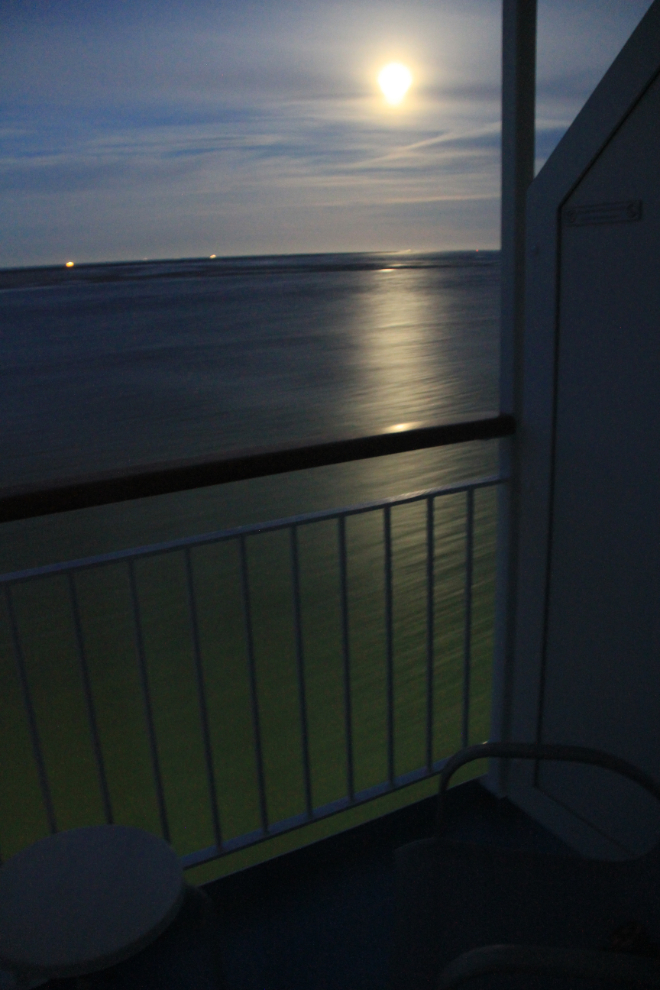
I’d seen a comment somewhere that cruise ships dock at an industrial port at Astoria, and I was pleased to see that we docked directly overlooking a log sorting yard, as I enjoy watching that particular sort of activity. Okay, maybe that is odd 🙂
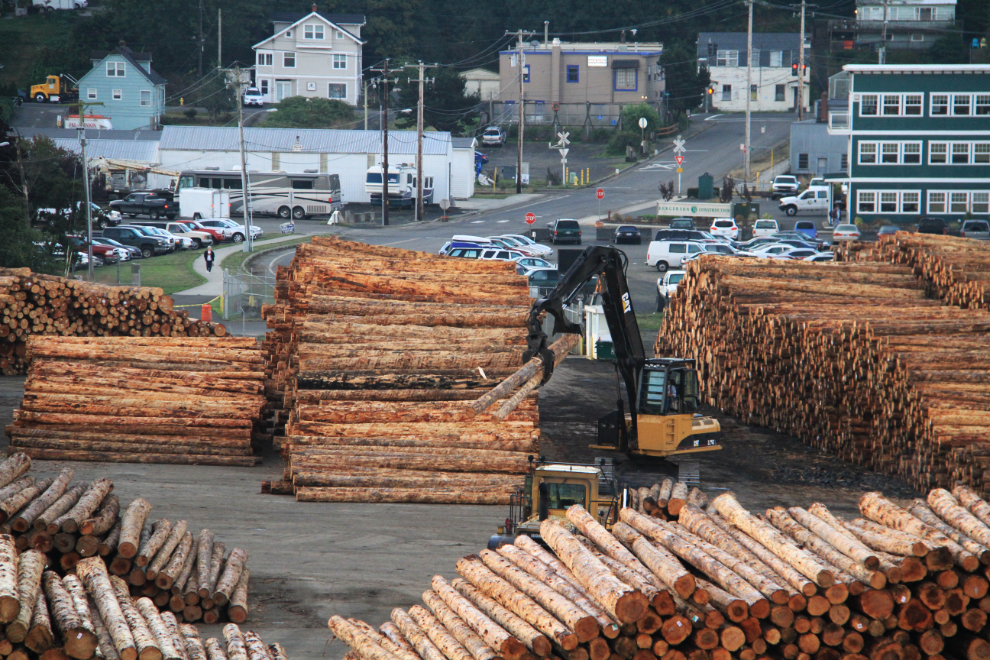
Sunrise at 07:07 am.
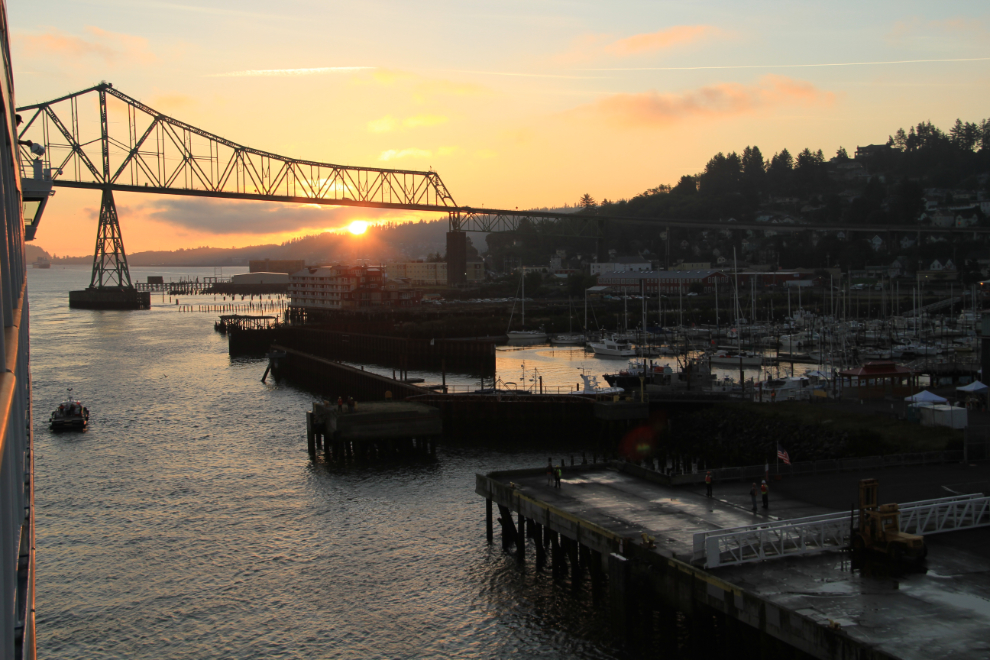
Clearing US Customs was a simple and friendly process on board – non-US citizens from Decks 9, 10 and 11 reported to the Four Seasons Restaurant at 8:30 and we were soon on our way to the shuttle buses that would take us downtown. For $7 each we could use the shuttles and any other public transportation all day.
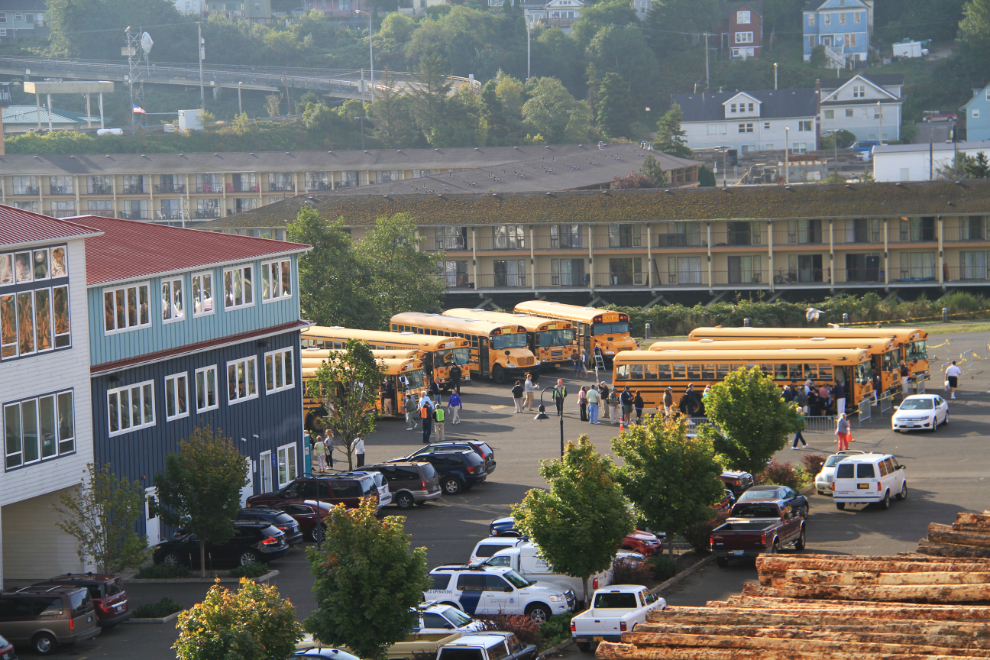
We got off the bus on Commercial Street downtown (it would be about a mile and a half walk from the ship), and soon found an antique store with lots of goodies and good prices. Dad made a small purchase, but nothing jumped out at me as a “must have”.
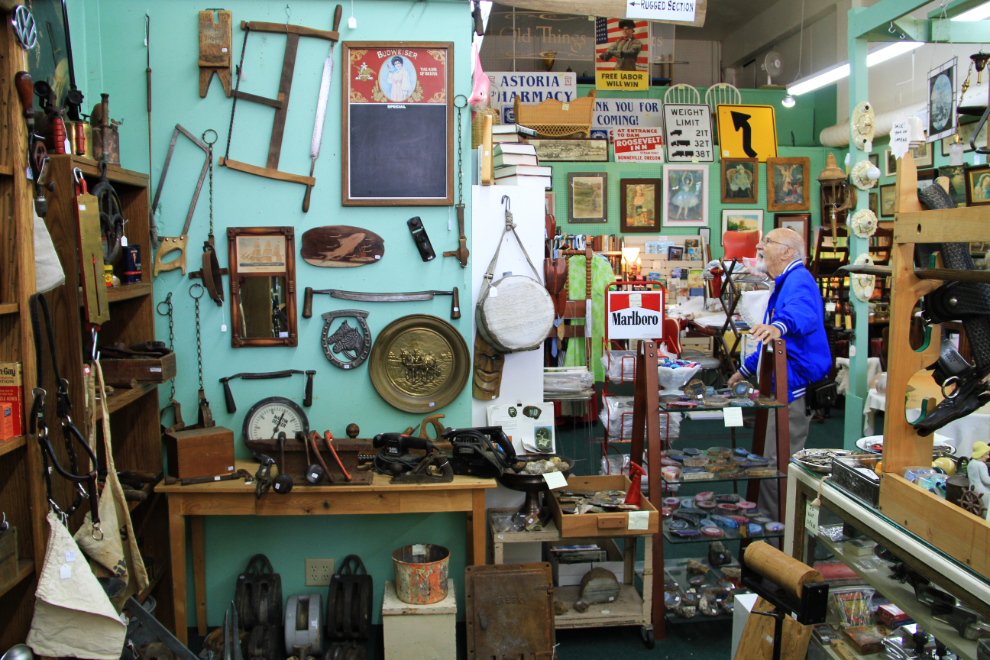
There are volunteers in blue jackets stationed all over Astoria to help visitors find their way around. Every one that we talked to was clearly proud of their community – that’s wonderful to see.
The wooden buildings of downtown Astoria all burned in a huge fire in 1922, and many of the dominant commercial buildings now date to within a handful of years of that fire.

The Liberty Theatre, opened in 1925, is a gem by any standards. A $9 million restoration has brought it back to its original splendour, and volunteers are happy to show you around. As soon as I walked into the lobby I knew that this was going to be an exciting tour.
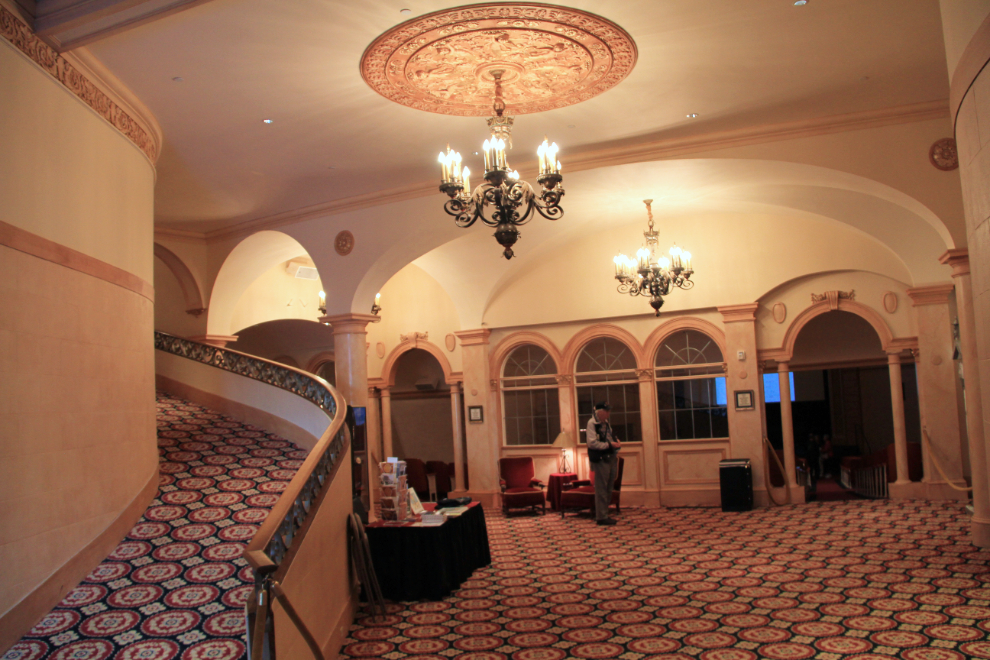
This is the view from the stage. The frame of the chandelier weighs 1,200 pounds, and the light panels are made of a cloth and parchment fabric.
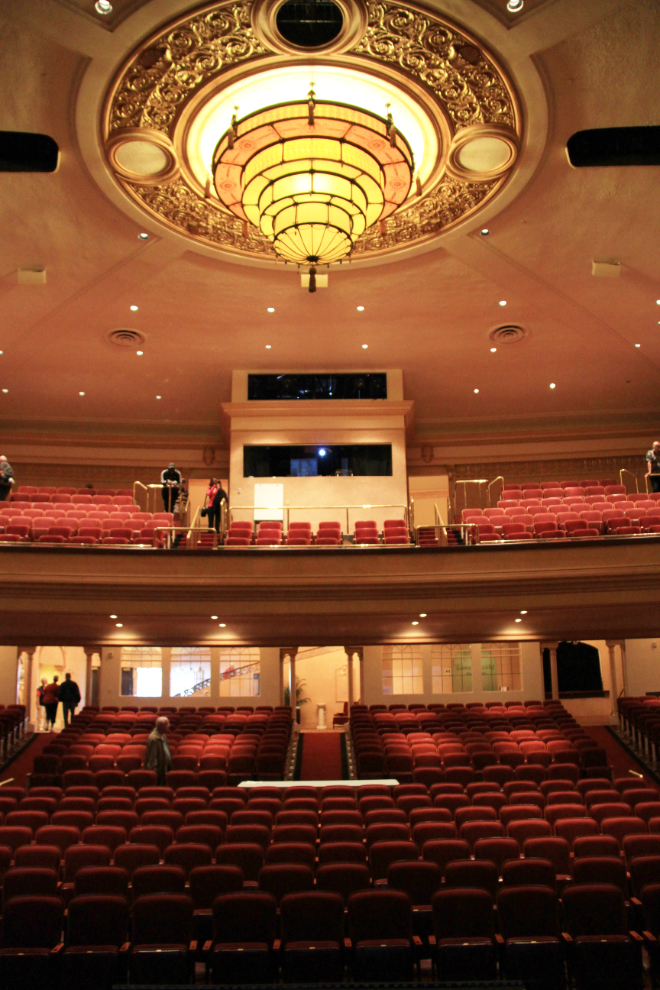
A view from one of the conference rooms on the upper floor of the Liberty Theatre. The old Bank of Astoria building is currently vacant.
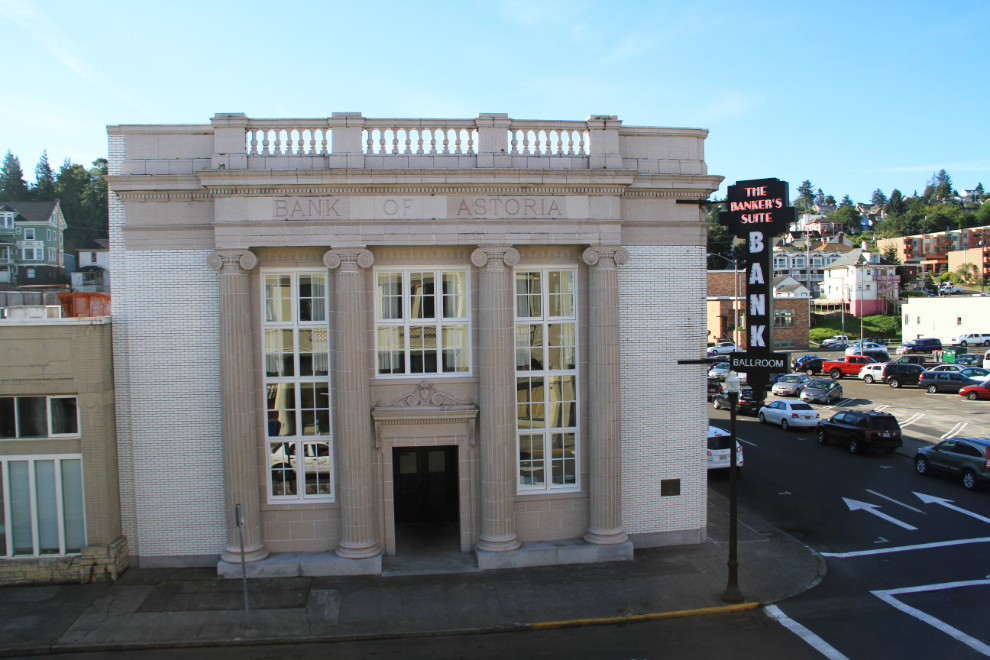
The Columbia River Maritime Museum is both massive and amazing. Dad and I got perhaps 1/6th of the way through it before he got too tired and had to return to the ship. The sailing gillnetter seen in this photo was once a very common type in the Pacific Northwest. This is the only one of its type in the world now, though, and it’s a replica built in 1989.
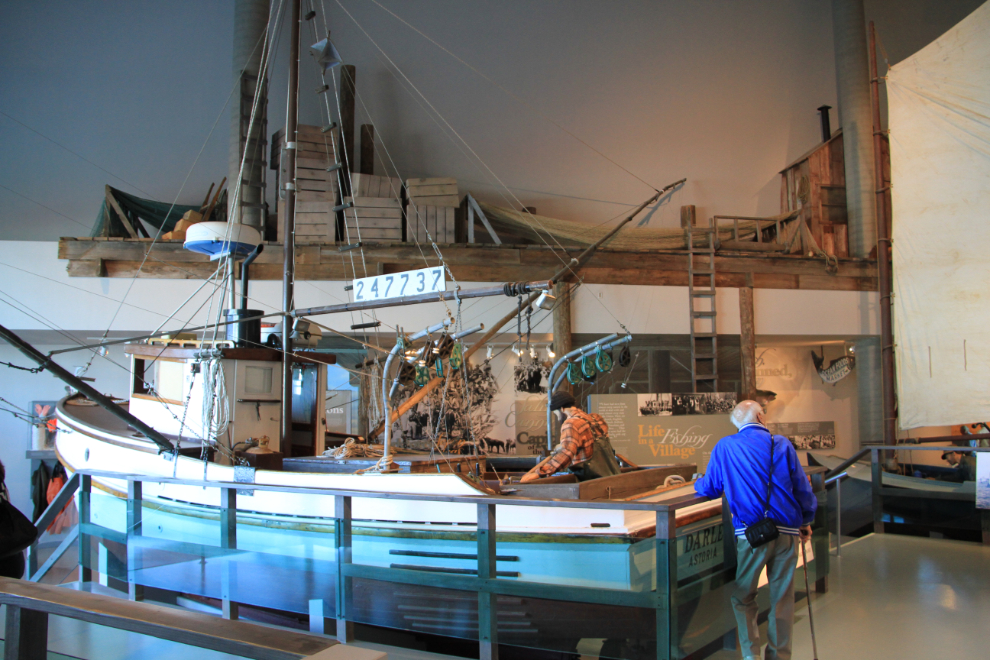
The detail in the boats is wonderful, with replica crew members handling fish, cooking meals and doing other things that would be part of everyday life for them.
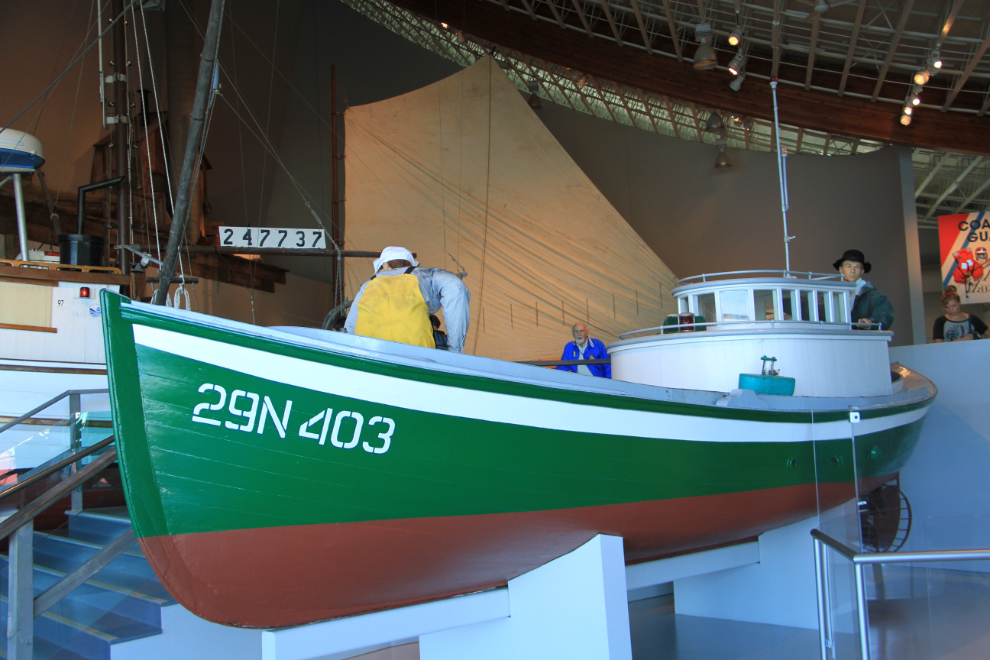
This Coast Guard rescue boat displayed as it would have looked while rescuing someone in heavy surf is a dramatic scene!
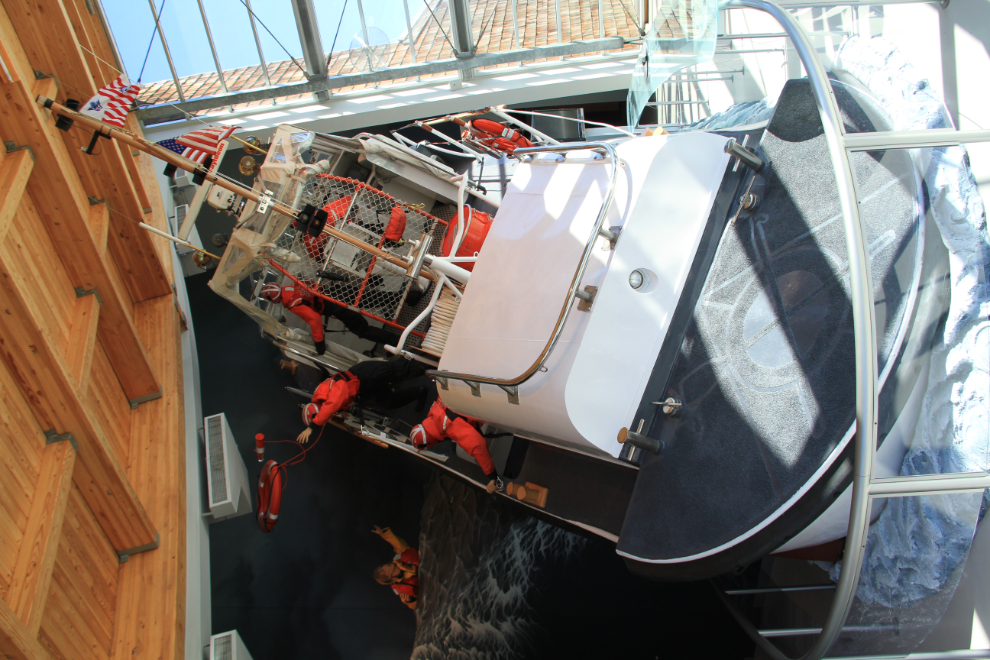
Outside the museum, a real Coast Guard base.
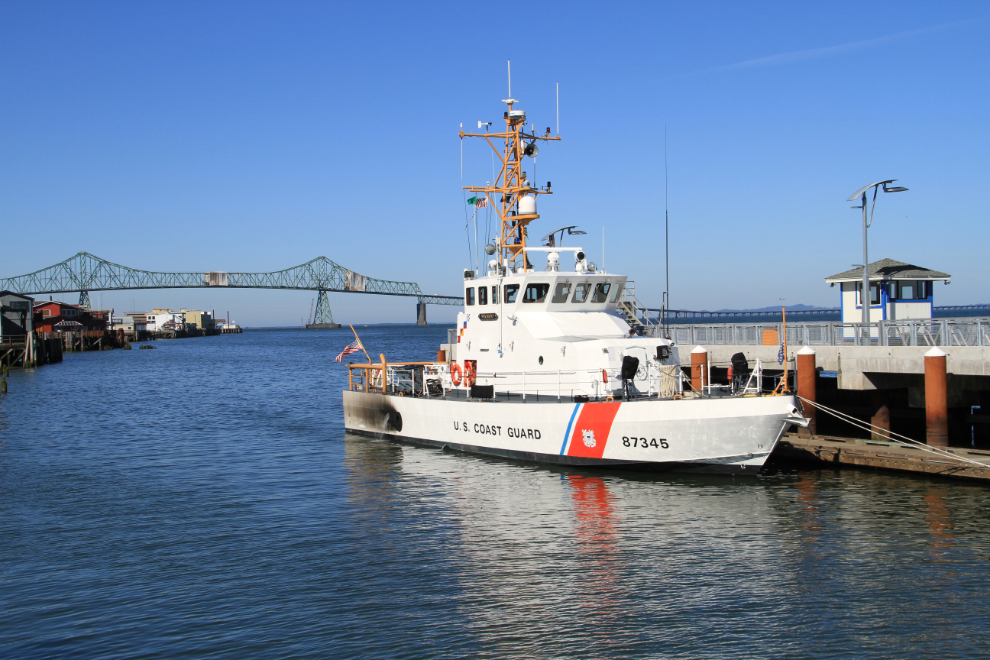
An active Coast Guard cutter, and the museum’s lightship Columbia. The 128-foot Columbia was on station at the mouth of the Columbia River from 1951 until 1979.
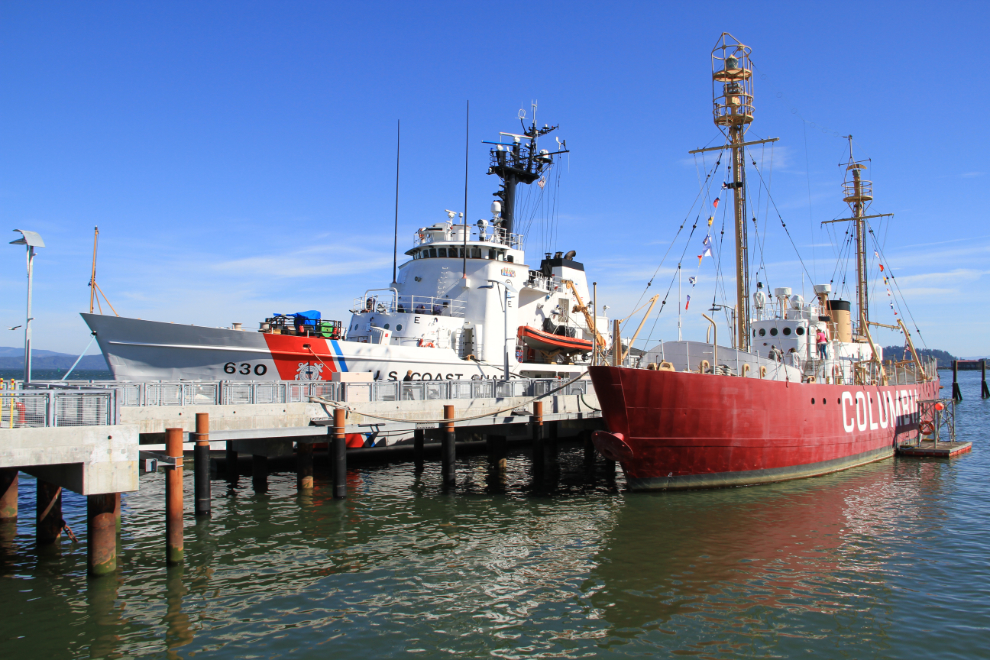
Down below in the “war room” on the lightship Columbia. Also down below there would have been up to 12 tons of food, 13,000 gallons of fresh water, 47,000 gallons of fuel, as well as all the crew cabins, machinery, etc.

I had to go back into the museum to see more. I could probably spend a couple of days there.

This map drawn by Gerardus Mercator in 1595 shows the North Pole as a pyramidal rock surrounded by a whirlpool feeding the oceans of the world via 4 rivers.
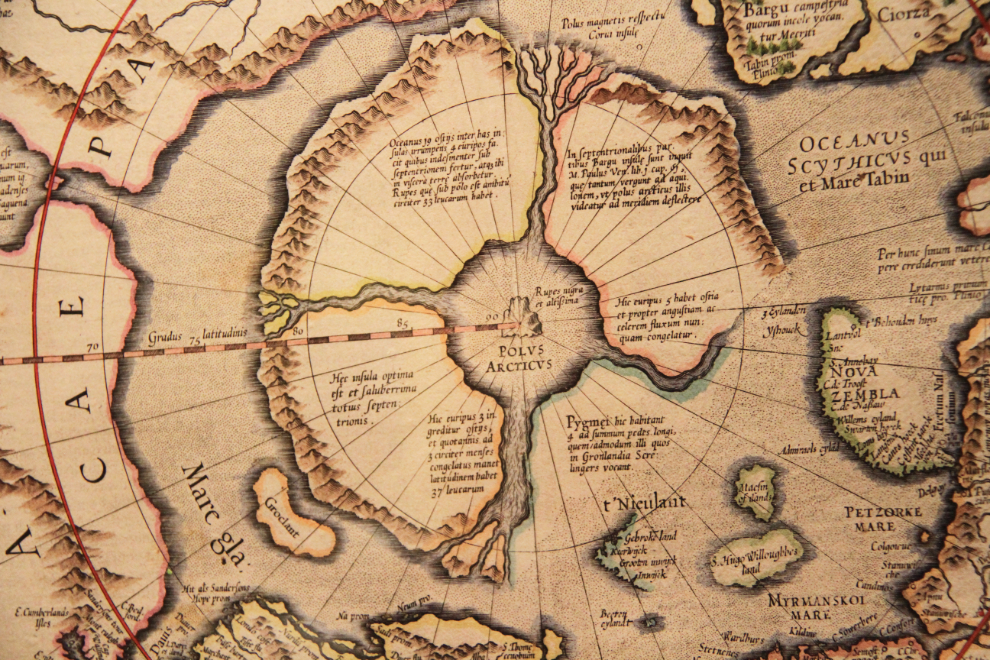
One large series of adjoining rooms has videos running, many of them showing ships dealing with violent storms at the mouth of the Columbia, where hundreds of vessels have been sunk, killing over 700 people.
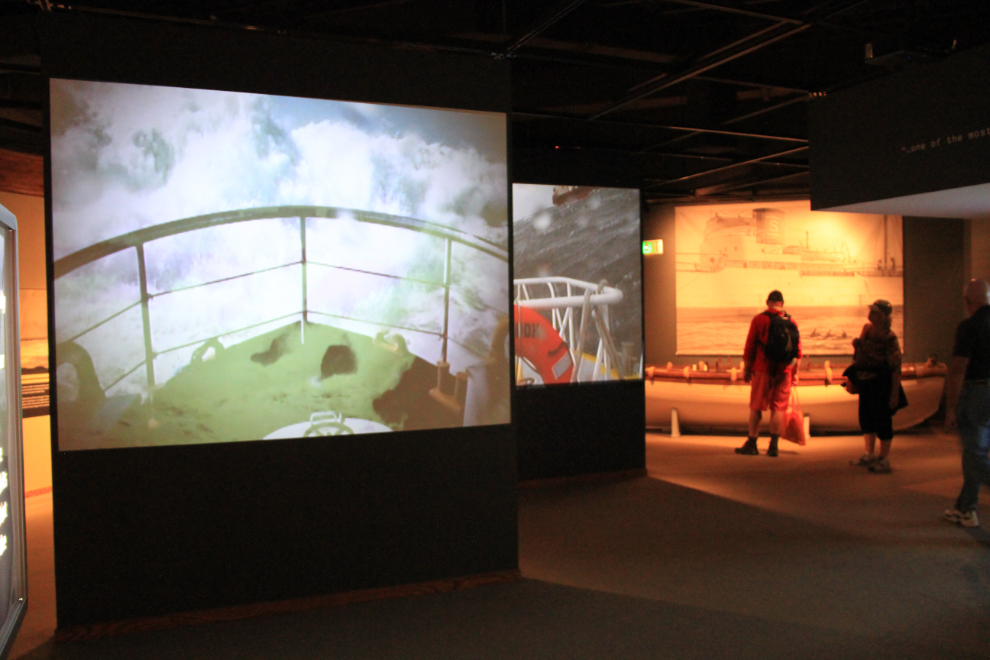
One of my friends recommended the Fort George Brewery for lunch, and the walk up 14th took me past several notable buildings.

Both the beers and the jambalaya I had at the brewery (the Fort George is one of 4 in town) were excellent. I had a pint of the Surf Pine Heather Ale first, and then the heavy Next Adventure Black IPA to better match the spiciness of the jambalaya. Mmmmm – just writing that makes me want to go back!
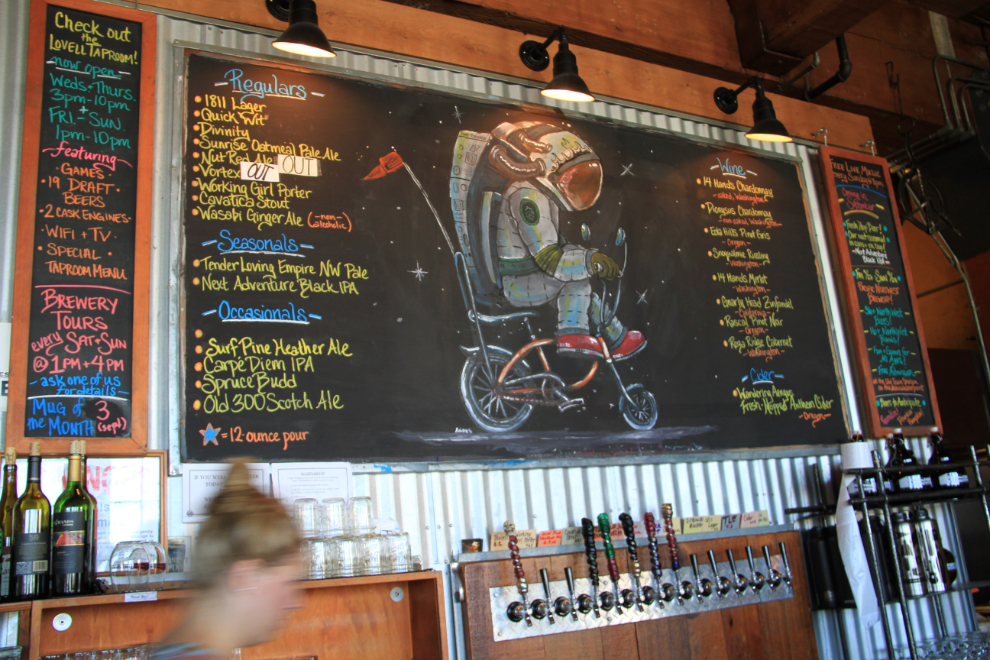
After lunch, I continued up the hill towards the Astoria Column. The hill is quite steep, and I wished for a minute or 2 that my lunch hadn’t been quite so large! On the way, I passed Astoria’s first neighbourhood, platted in 1846 by Colonel John McClure and John Shively.
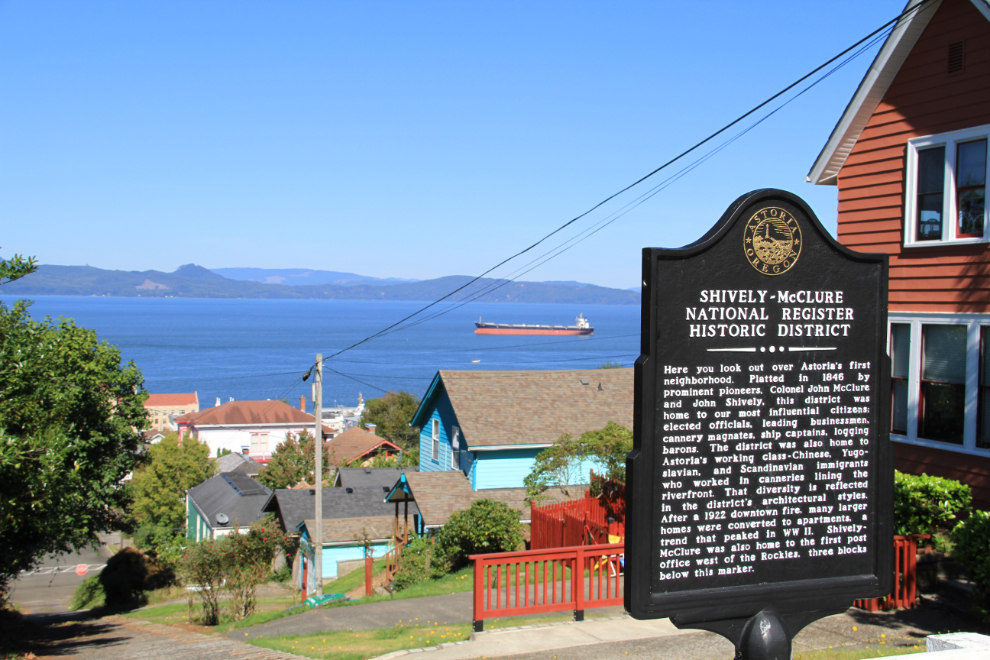
Finally, at 1:45 pm, I spotted the Astoria Column on top of Coxcomb Hill. Shuttle buses were running to it as well – but walking a few thousand uphill steps to get to it makes the famous 164 steps to get to the top of the column seem very easy 🙂
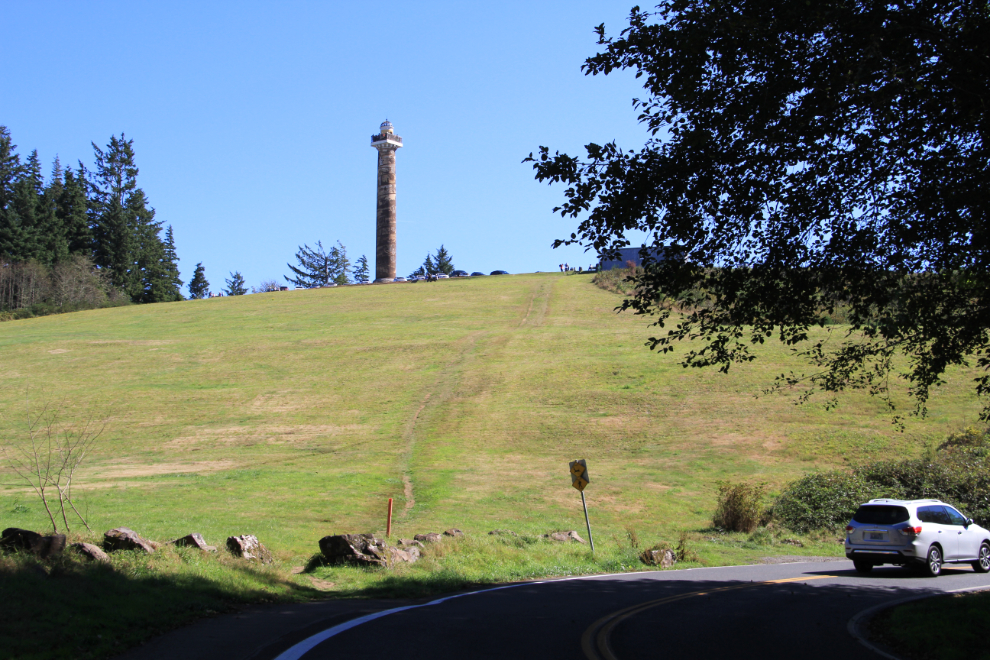
The Astoria Column was built in 1926, decorated with 22 scenes from the region’s history by Italian immigrant artist Attilo Pusterla using a technique called sgraffito.
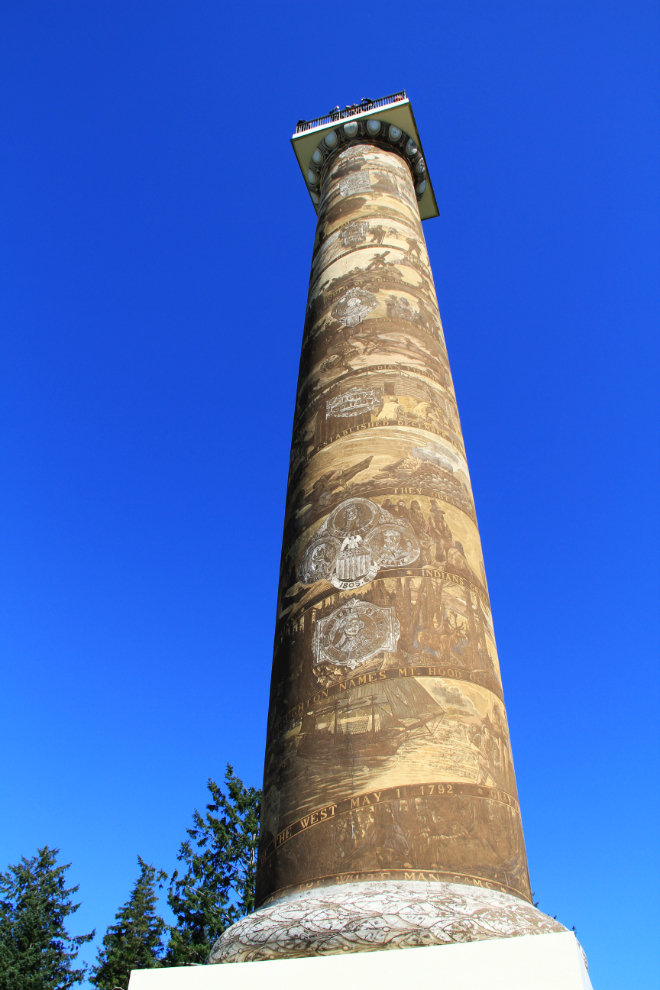
On a day like we had, the views from the top are as advertised – wonderful. To the east over the Youngs River…
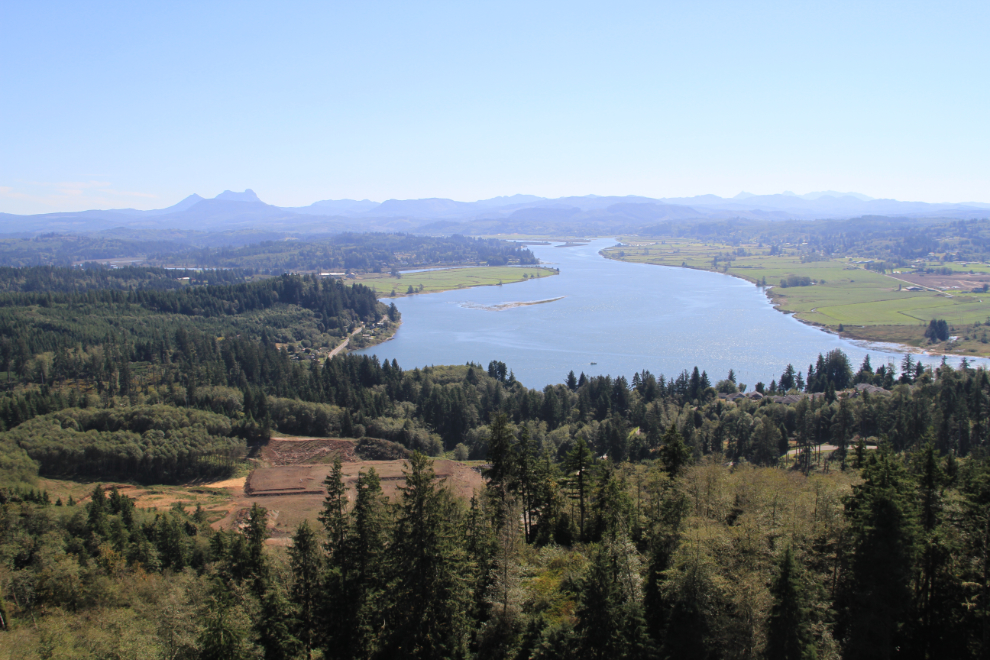
…and to the west over Astoria and the Columbia River. I talked to one fellow up top who just couldn’t wrap his head around how large the Columbia River is.
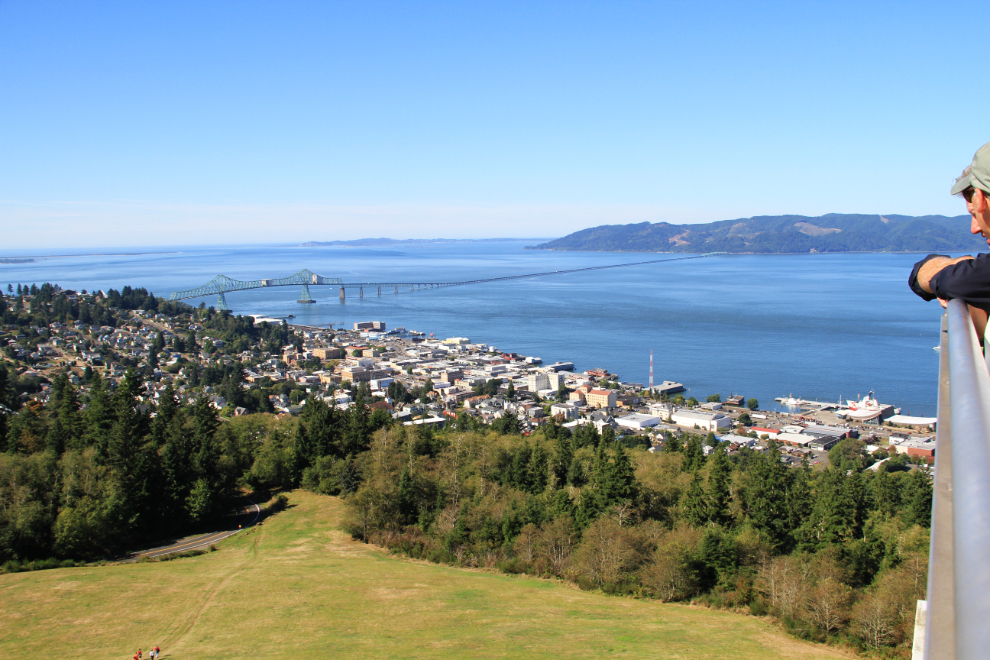
This relief map at the base of the column helps to put it all into perspective.
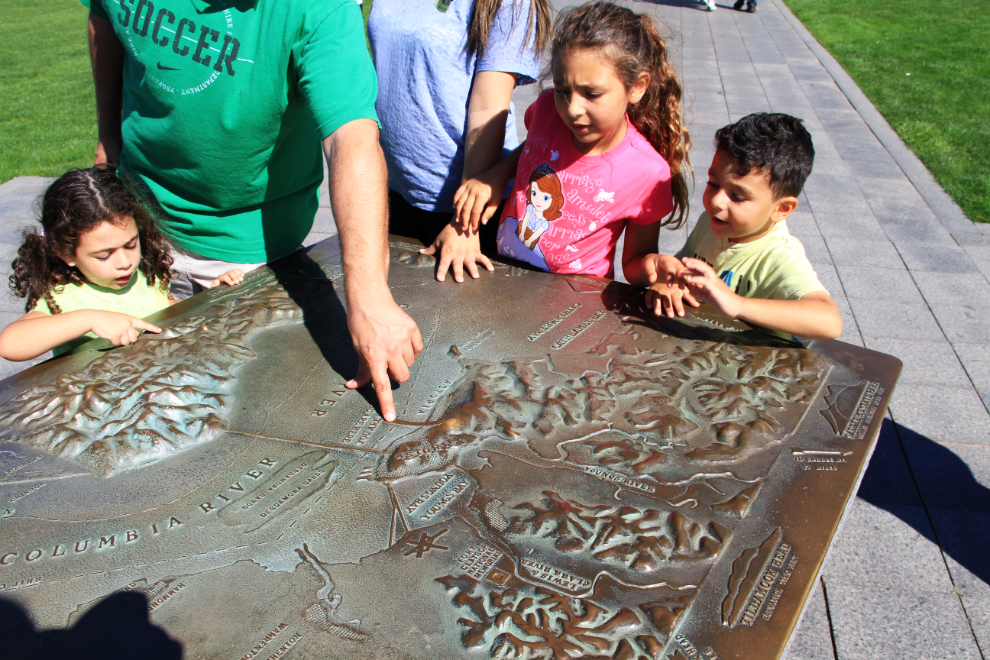
I took a different route back to town, starting with a half-mile trail through the forest, then past several historic homes, both restored…
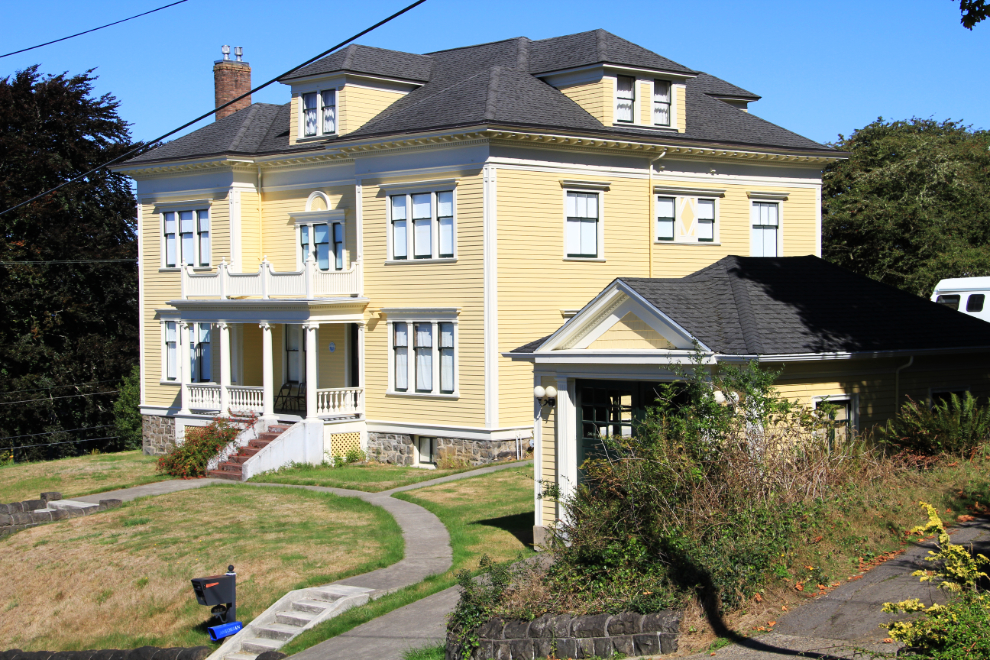
…and more original. This one certainly has some architectural features that will make it a superb restoration project for someone with deep pockets.
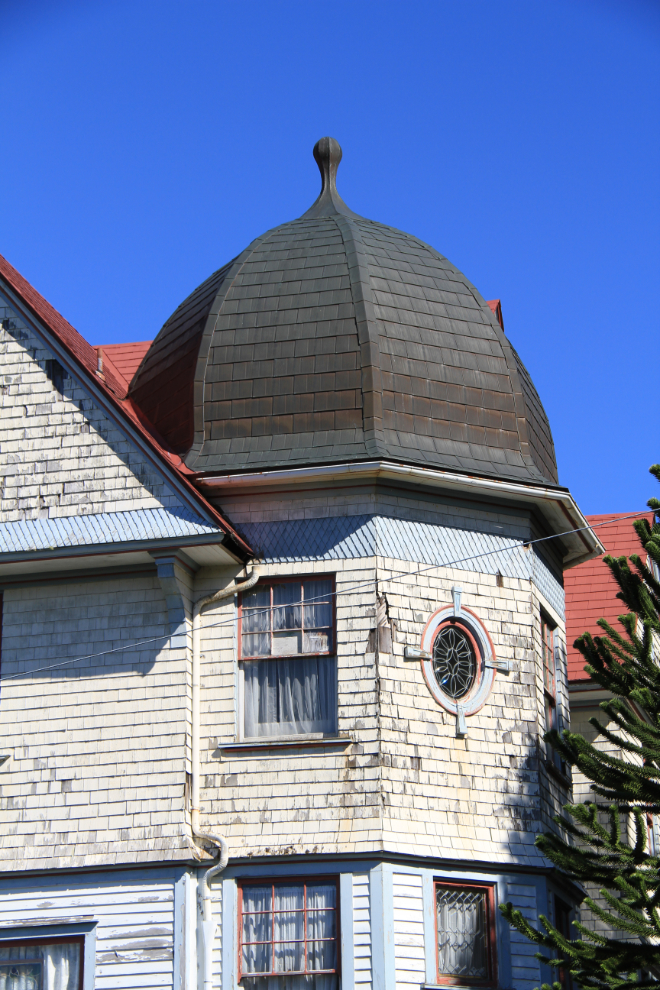
I ran out of time so didn’t see the inside of the Heritage Museum, or the Flavel House Museum in particular. Next time!

I ended up back at the Maritime Museum, and thought about taking either the shuttle bus or the century-old trolley (both of which are seen in this photo), but decided instead to keep walking.
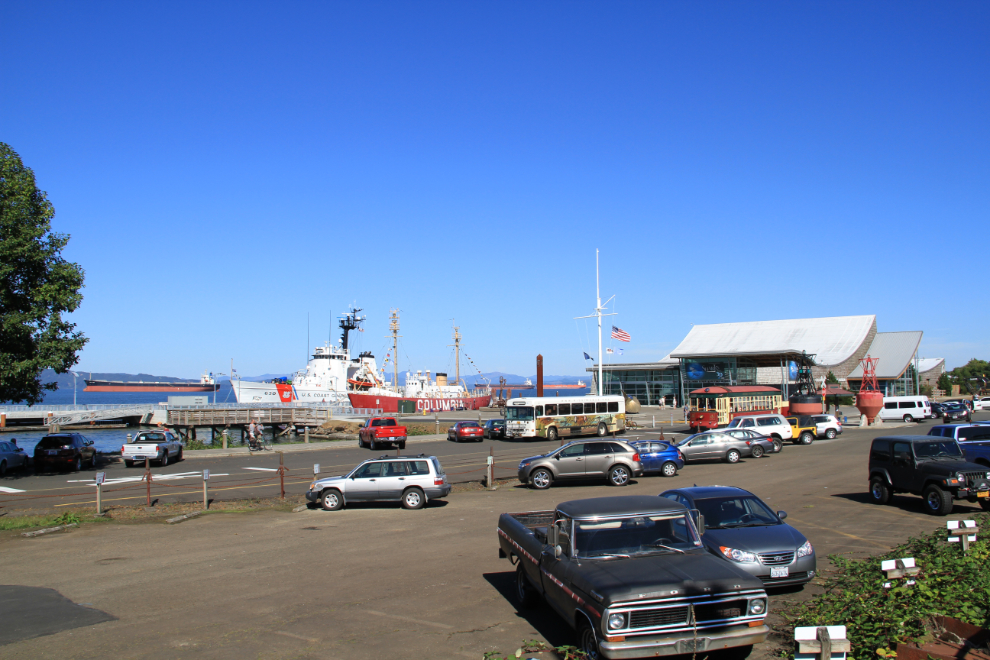
Only by walking along the 4-mile-long River Walk do you see artifacts like this. I saw why rope pulleys and blocks-and-tackle were so inexpensive at the antique shop – they’re hanging around everywhere 🙂
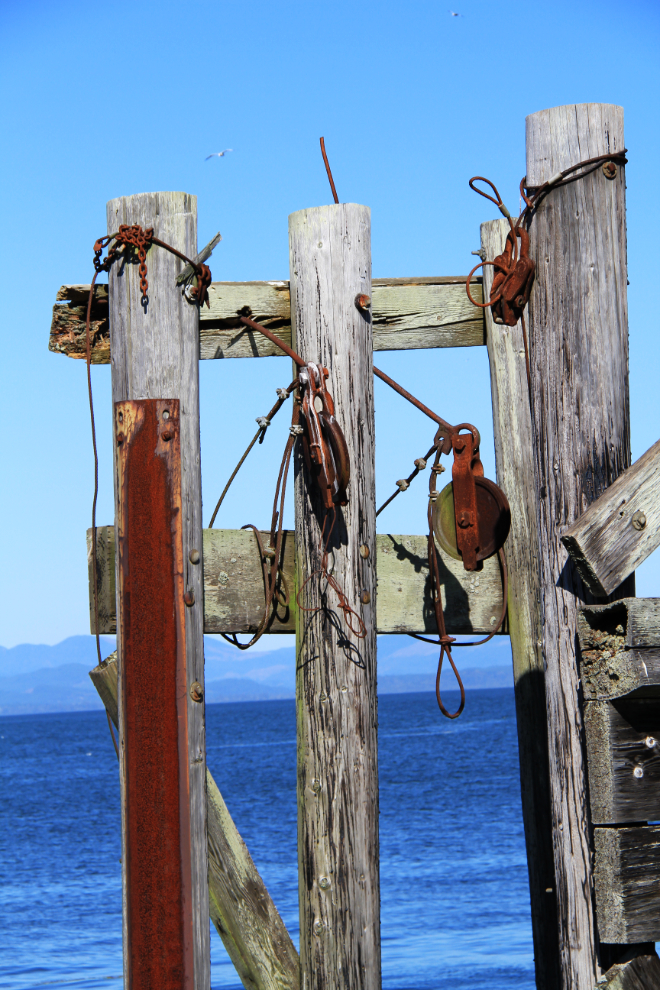
The interpretation along the River Walk is excellent, both on the main walk and side wharfs.
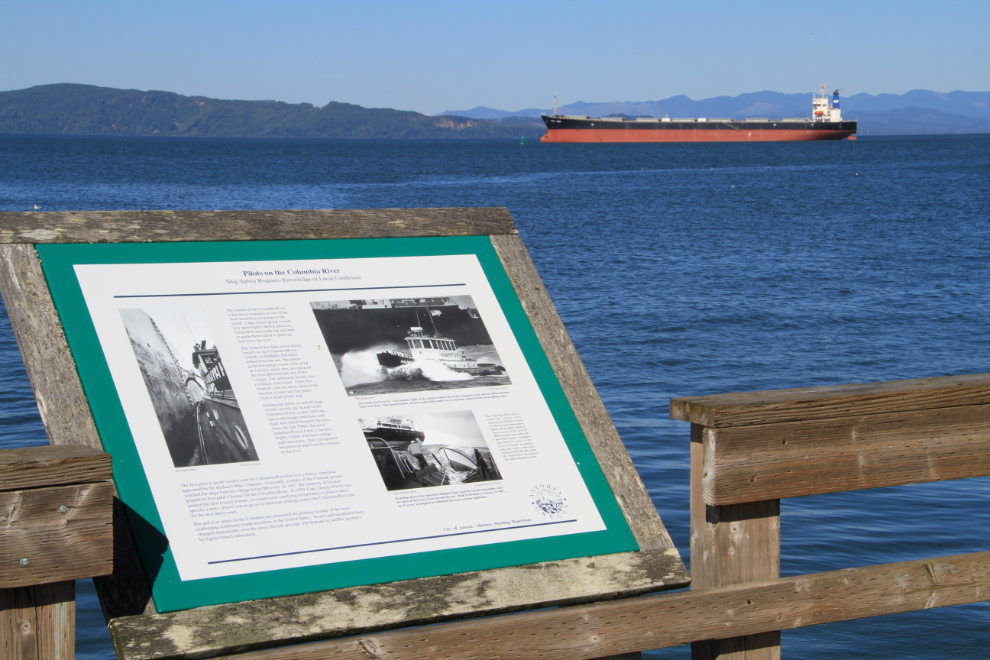
There seemed to always be something going on along the river – fishboats and pleasure boats coming and going, and a half-dozen freighters waiting for berths.
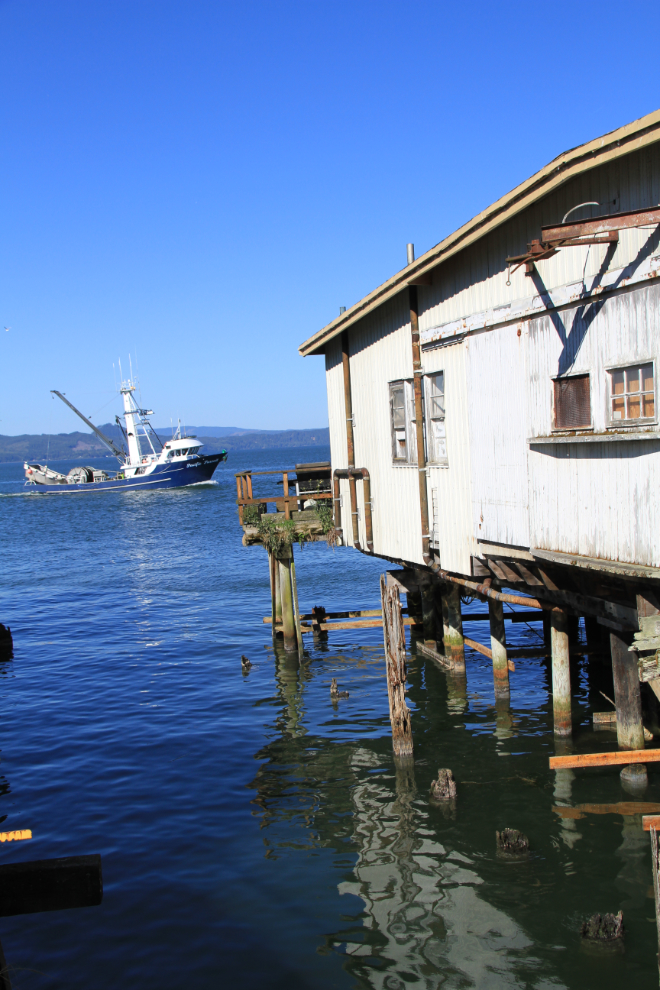
Here’s an industrial artifact from a long-gone building that I can’t figure out. Any guesses?
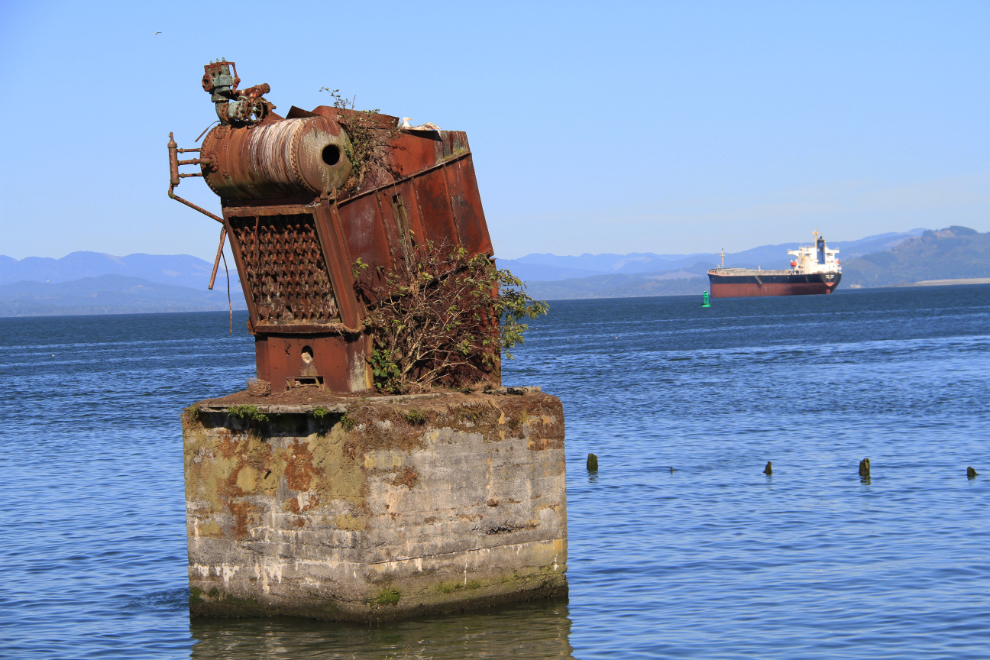
The number of birds, in this case cormorants, seems to indicate that the mouth of the Columbia River is a healthy place to be.
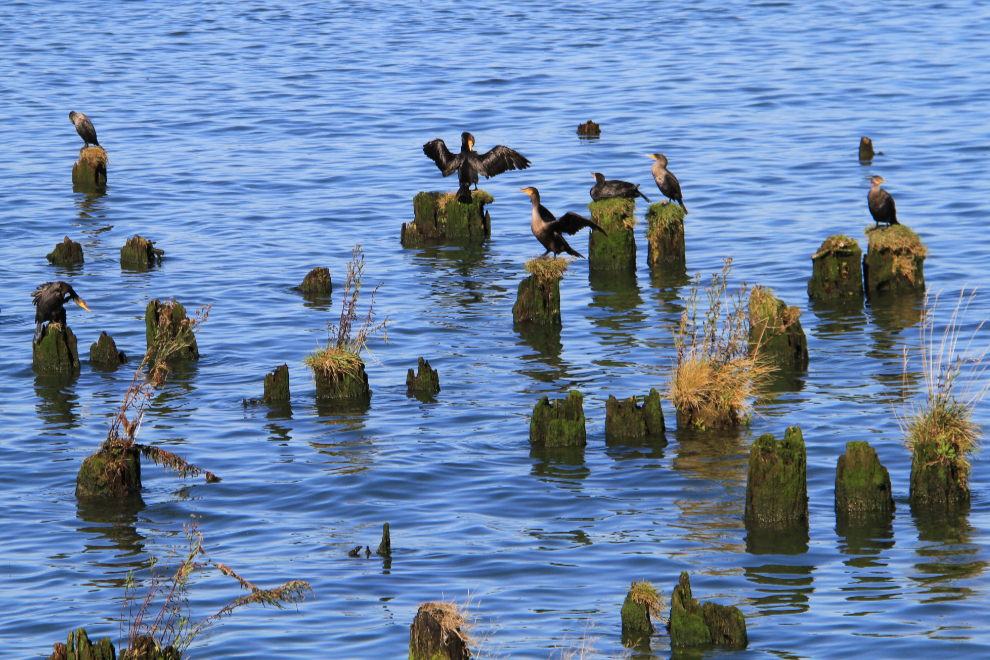
Now there’s a fine-looking fishboat.
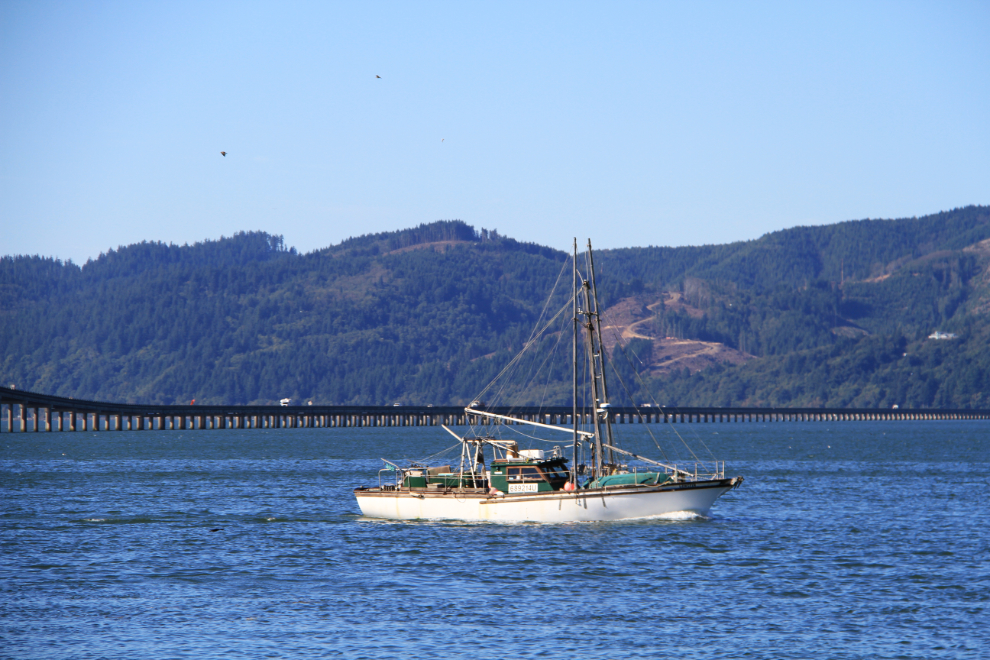
The Maritime Memorial Park is an interesting place. The next time I come, I’ll be looking for some more information about some of the events memorialized on these walls that took several lives.
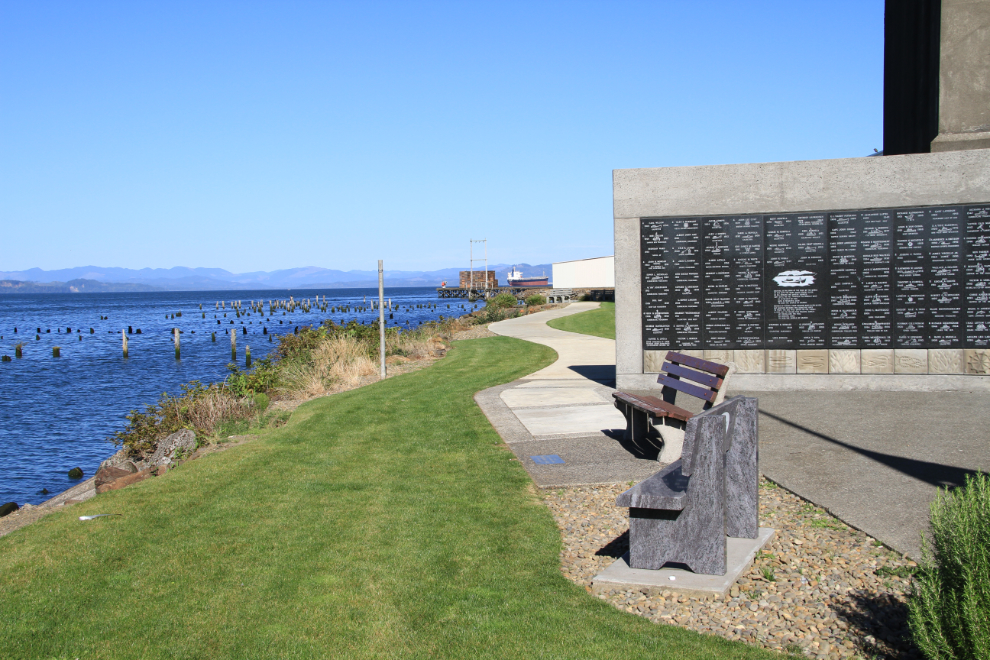
The coolest artifact I found was certainly this boat-launching cradle, almost hidden by bushes.
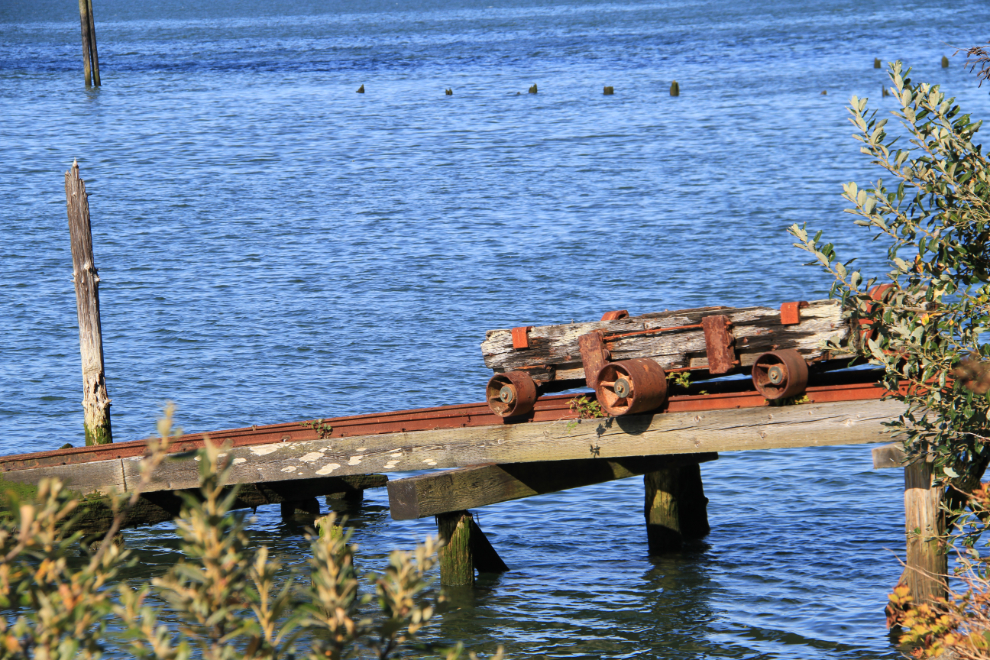
Back at the ship at 4:15 pm (15 minutes before the all-aboard deadline). There’s Dad on our balcony in the centre of the photo, waving at me – he was starting to worry that I had gotten a bit too distracted by something!
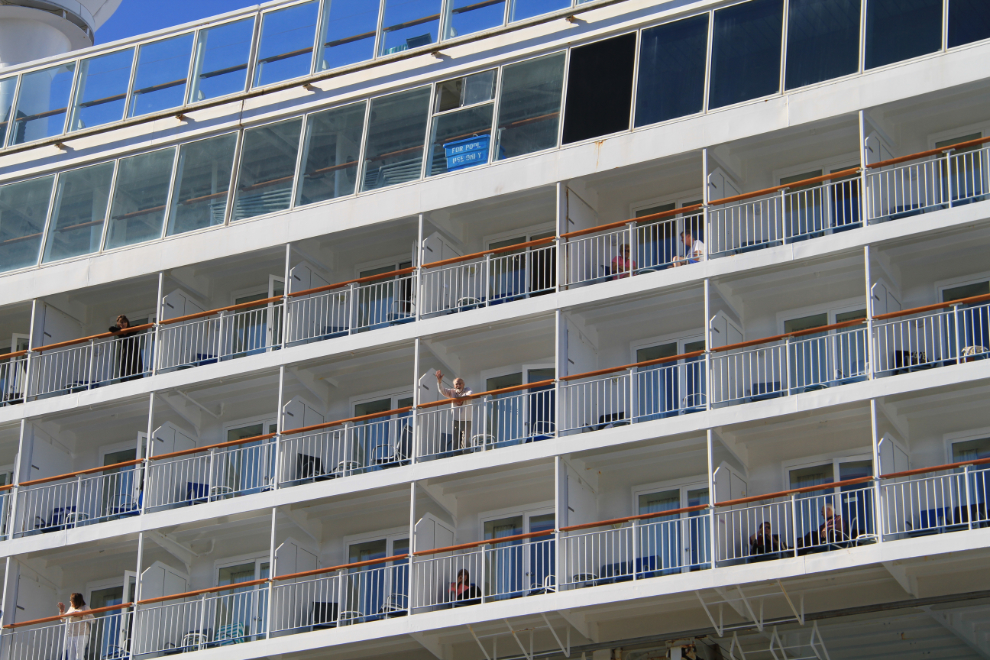
Goodbye Astoria. You’re definitely on my RV-destination list – there’s a great deal more I want to see.
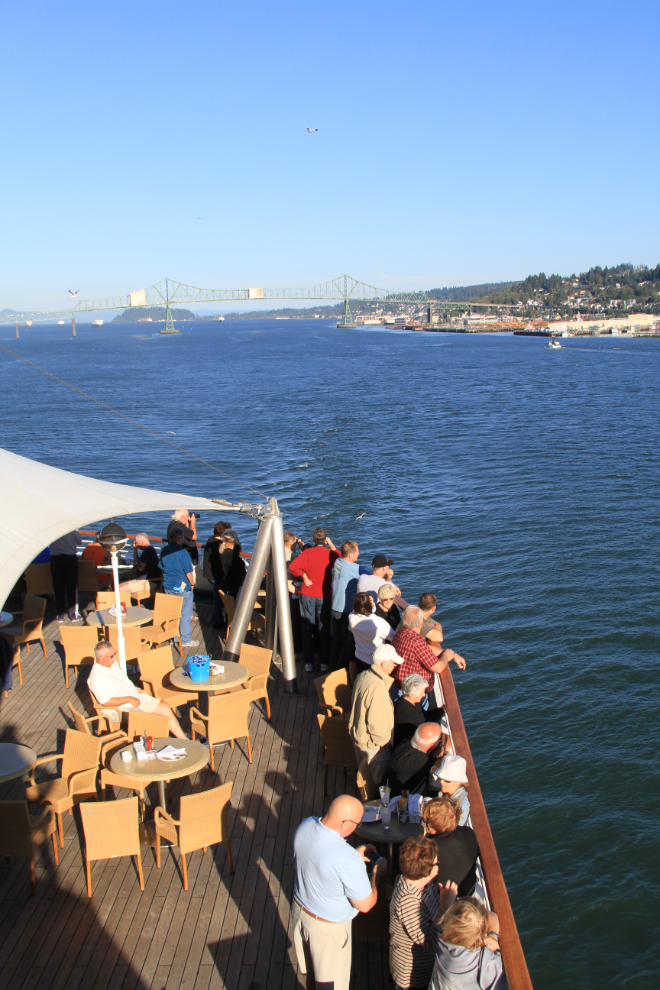
A final shot from the balcony at 8:15 pm. The next day, we would be at sea all day, en route to San Francisco.
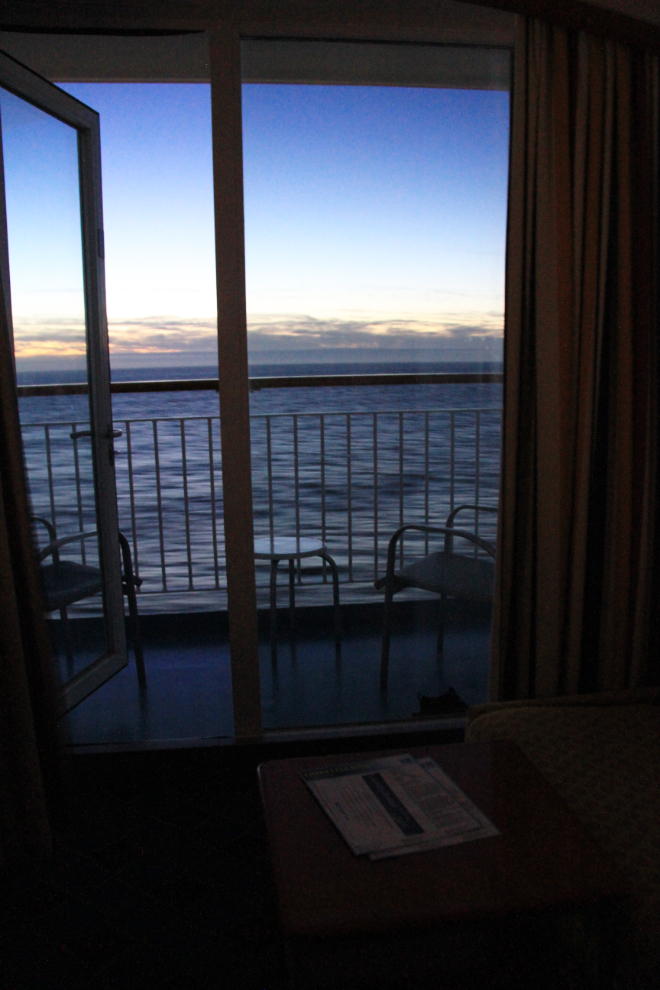
As I finish this post off, it’s 03:00 am on Saturday. We’re about 4 hours from sunrise, and from sailing under the Golden Gate Bridge, certainly one of the most dramatic cruise port arrivals in the world, although it’s quite foggy at the moment so my fingers are crossed that it clears. It’s just taken me 36 minutes to load the 41 small photos for this post, at a cost of $14.40 🙁 But at 11:30, Dad and I will be meeting Cathy and her girlfriends for lunch at the Sir Francis Drake Hotel, so this is a really special day from a few perspectives.